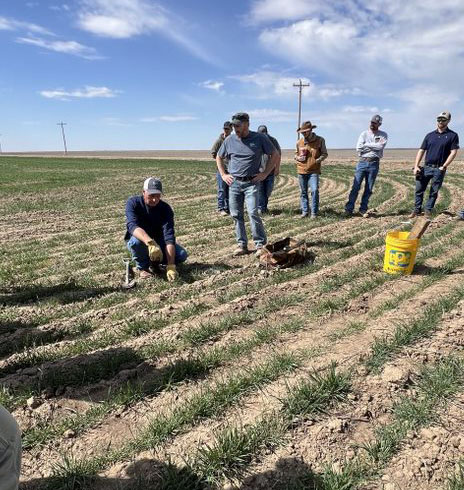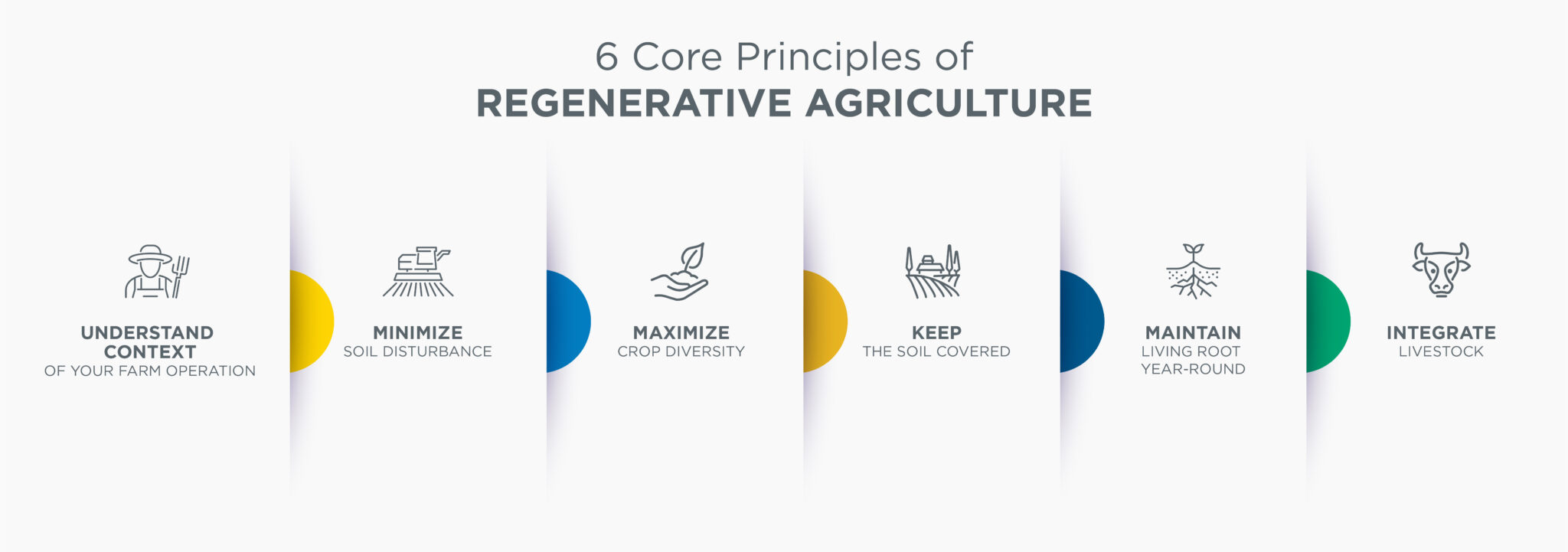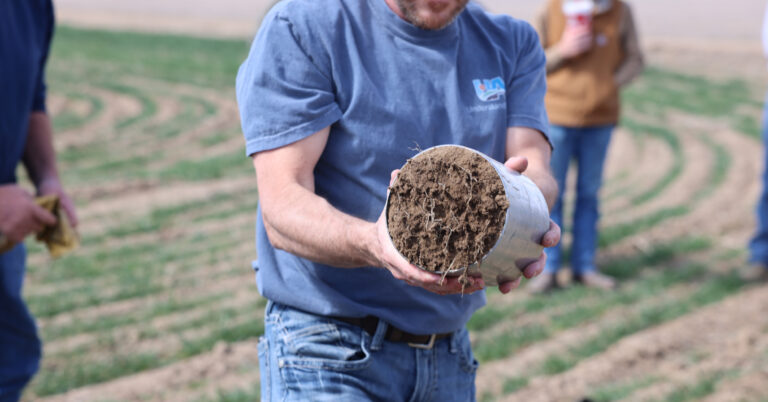Four misconceptions about regenerative agriculture


Beth Stebbins
Director of Sustainability
July 31, 2024
Regenerative agriculture has been a buzzword in the sustainability space. Producers who practice it can improve farm profitability by reducing inputs and unlocking other revenue streams.
Understandably, many farmers remain skeptical. While adoption is increasing, cover crops were planted on only 4.7 percent of total U.S. cropland in 2022, according to USDA data. Implementing new practices comes with new costs and the potential for reduced revenue. Is the potential upside worth the risk?
To learn how to help producers overcome hurdles to adoption, we have partnered with the American Farmland Trust, a national ag organization that has done case studies on farmers who have successfully completed regenerative ag “transitions.”
Below, AFT helps us to address producers’ common misconceptions about regenerative agriculture.
“No-till and cover crops will reduce my yields.”
In the short term, implementing no-till and planting cover crops could reduce yields. However, as these practices build up soil organic carbon, yields should recover. When considering implementation of a regenerative system, take advantage of educational resources to minimize initial yield loss. Look to early adopters in the community to learn from their successes and mistakes.

“Regenerative systems are too expensive.”
Cover crop seed and application expenses do add up. However, there are state and federal programs to help reduce these costs. These programs can often be stacked with non-governmental programs, such as Scoular’s regenerative pilot program to incentivize producers for new and continued adoption of regenerative ag practices.
Furthermore, when calculating regenerative system costs, be sure to account for all factors. Reducing tillage will lower fuel costs and equipment wear. For instance, eliminating chisel plow use will result in a savings of one gallon of diesel per acre. Planting cover crops can displace synthetic nitrogen and reduce fertilizer bills.
When adopting a regenerative system, it is also important to prioritize profitability before yield. Is it more essential to yield 200-bushel corn or to turn a profit?

Scoular hosted a regenerative agriculture field day in Tribune, Kansas.
“Soil temperatures will be too cold and wet for planting.”
The living root and respiration from cover crops will generate energy, helping to warm the soil enough to allow for planting. It’s true that this won’t warm the soil as much as direct sunlight, but the cover’s shade will help limit moisture loss due to evaporation. Cover crops help moderate soil conditions, rather than letting them swing between extremes like bare soil will. Moderating soil temperatures will also help microbes thrive, allowing for more buildup of soil organic matter.
“Cover crops will rob my cash crop of nutrients.”
Depending on the cover crop planted, there can be short-term changes in the soil’s nutrients. However, the cover crop will eventually decompose, releasing sequestered nutrients into the soil and building better overall soil health. These nutrients can replace or reduce synthetic nutrient application, so it is important to do soil testing to see what is available in the soil for “free.”
For more information about Scoular’s regenerative ag efforts, contact Brian Ellis: bellis@scoular.com.

